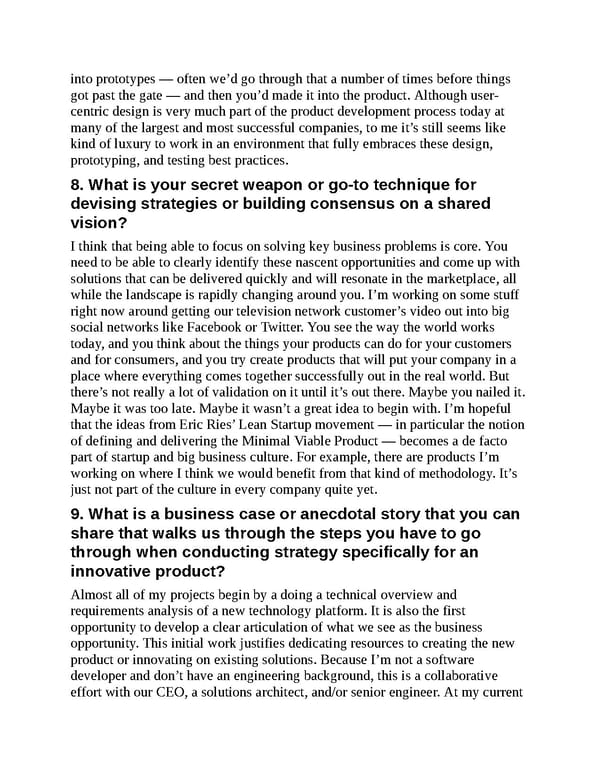into prototypes — often we’d go through that a number of times before things got past the gate — and then you’d made it into the product. Although user- centric design is very much part of the product development process today at many of the largest and most successful companies, to me it’s still seems like kind of luxury to work in an environment that fully embraces these design, prototyping, and testing best practices. 8. What is your secret weapon or go-to technique for devising strategies or building consensus on a shared vision? I think that being able to focus on solving key business problems is core. You need to be able to clearly identify these nascent opportunities and come up with solutions that can be delivered quickly and will resonate in the marketplace, all while the landscape is rapidly changing around you. I’m working on some stuff right now around getting our television network customer’s video out into big social networks like Facebook or Twitter. You see the way the world works today, and you think about the things your products can do for your customers and for consumers, and you try create products that will put your company in a place where everything comes together successfully out in the real world. But there’s not really a lot of validation on it until it’s out there. Maybe you nailed it. Maybe it was too late. Maybe it wasn’t a great idea to begin with. I’m hopeful that the ideas from Eric Ries’ Lean Startup movement — in particular the notion of defining and delivering the Minimal Viable Product — becomes a de facto part of startup and big business culture. For example, there are products I’m working on where I think we would benefit from that kind of methodology. It’s just not part of the culture in every company quite yet. 9. What is a business case or anecdotal story that you can share that walks us through the steps you have to go through when conducting strategy specifically for an innovative product? Almost all of my projects begin by a doing a technical overview and requirements analysis of a new technology platform. It is also the first opportunity to develop a clear articulation of what we see as the business opportunity. This initial work justifies dedicating resources to creating the new product or innovating on existing solutions. Because I’m not a software developer and don’t have an engineering background, this is a collaborative effort with our CEO, a solutions architect, and/or senior engineer. At my current
 UX Strategy: How to Devise Innovative Digital Products that People Want Page 318 Page 320
UX Strategy: How to Devise Innovative Digital Products that People Want Page 318 Page 320